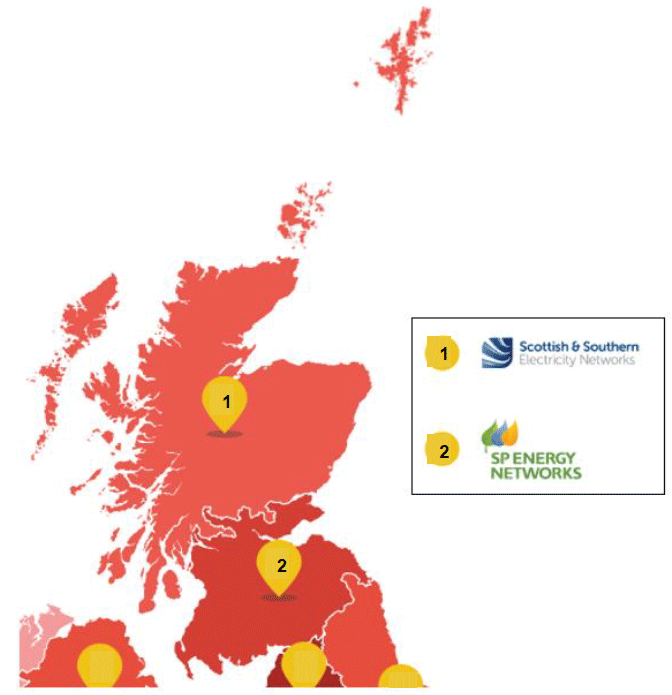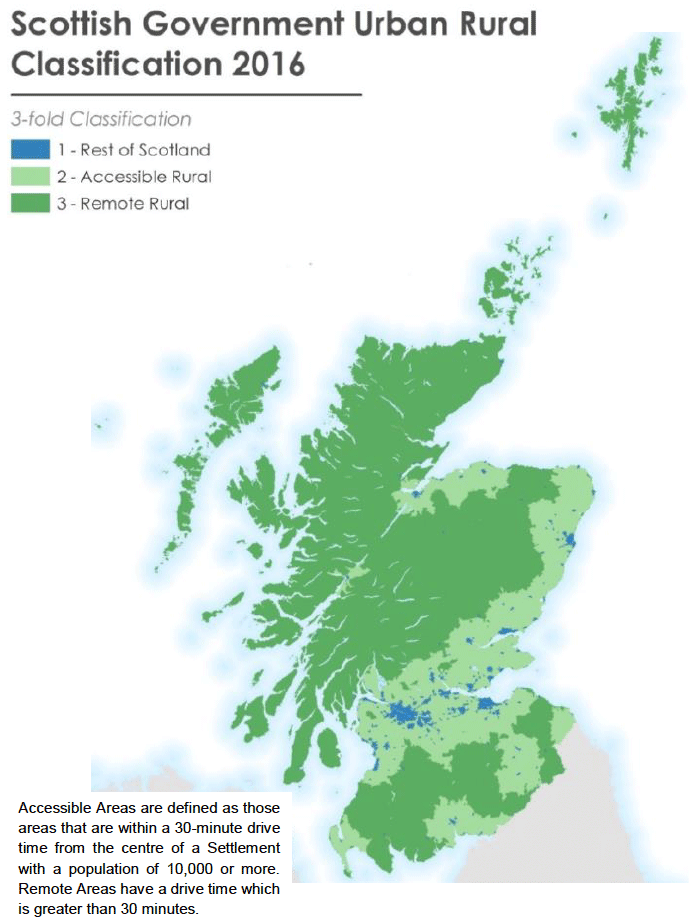Low carbon heating in domestic buildings - technical feasibility: cost appendix
Cost appendix to accompany the technical feasibility of low carbon heating in domestic buildings report.
2 Network reinforcement costs
A complementary standalone study[6] was conducted by Scottish & Southern Electricity Networks (SSEN) on the impact of future low-carbon electric heating penetration on its area of competency of the Scottish power distribution network competency, see Figure 8.

The secondary substation and Low Voltage levels of the Network were modelled by SSEN to examine the technical and economic impact of the future installation of electric heating and heat pumps per plot for each of the classifications in the Scottish Governments Urban and Rural 3-fold model. Figure 9 shows the geographical location across the Scottish territory of the area classifications: Rest of Scotland (blue), Accessible Rural (light green), Remote Rural (dark green).

Graphic text below
Accessible Areas are defined as those areas that are within a 30-minute drive time from the centre of a Settlement with a population of 10,000 or more. Remote Areas have a drive time which is greater than 30 minutes.
The amount of heating systems already installed was assessed for a range of different heating types in each of the three areas and the load of electric heating units that could potentially be installed in future was estimated. The number and size of secondary transformers, average number of LV feeders and customer per transformer was calculated to produce the cost of network upgrade interventions.
The results of this analysis are given for both uptake of conventional electric and heat pump heating across the Scottish Government’s Urban and Rural classifications and are summarised in Table 13.
| Area Classification | Heat Pump uptake (£/plot) | Direct electric uptake (£/plot) |
|---|---|---|
| 1 - Rest of Scotland | £489 | £539 |
| 2 - Accessible Rural | £1,532 | £1,586 |
| 3 - Remote Rural | £1,653 | £1,698 |
The analysis found the cost of network reinforcement in urban areas to be substantially lower than for rural areas, also due to the average larger size of the transformers. Additionally, the smaller load carried by the uptake of heat pumps, as opposed to direct electric heating, requires more modest intervention and lower costs.
While the overall cost of network upgrade (for secondary substation and low voltage levels) due to the implementation of low-carbon heating is not particularly large, total cost will need to consider also additional upgrades that will be required to support the electrification of transport. While these additional measures will contribute to increase the total cost of the upgrades, this will be shared across different energy services.
Contact
Email: zeroemissionsheat@gov.scot
There is a problem
Thanks for your feedback